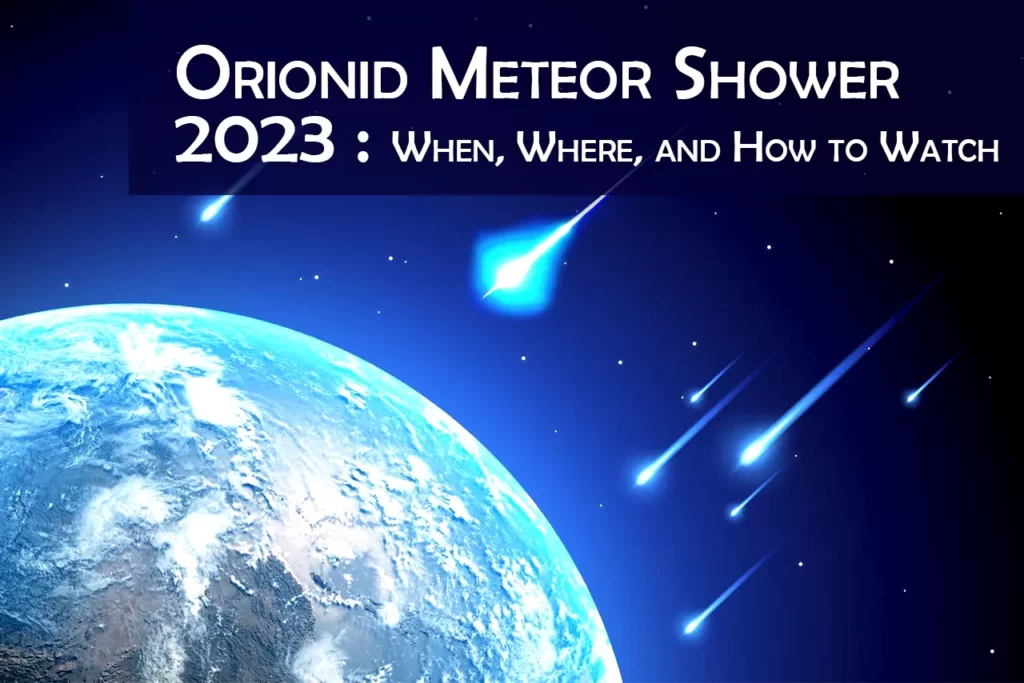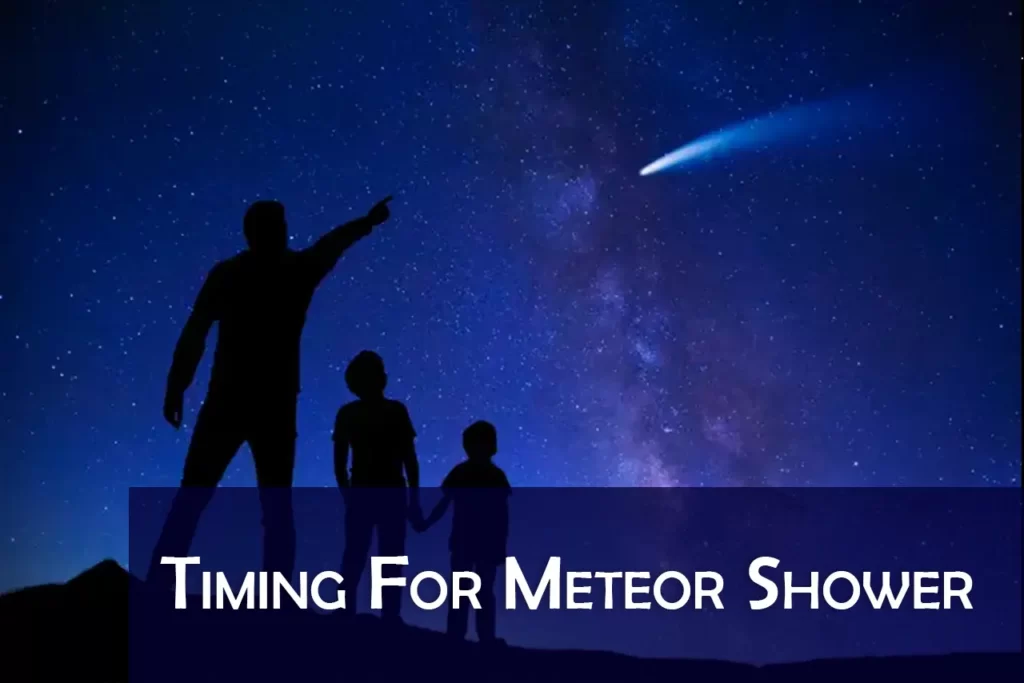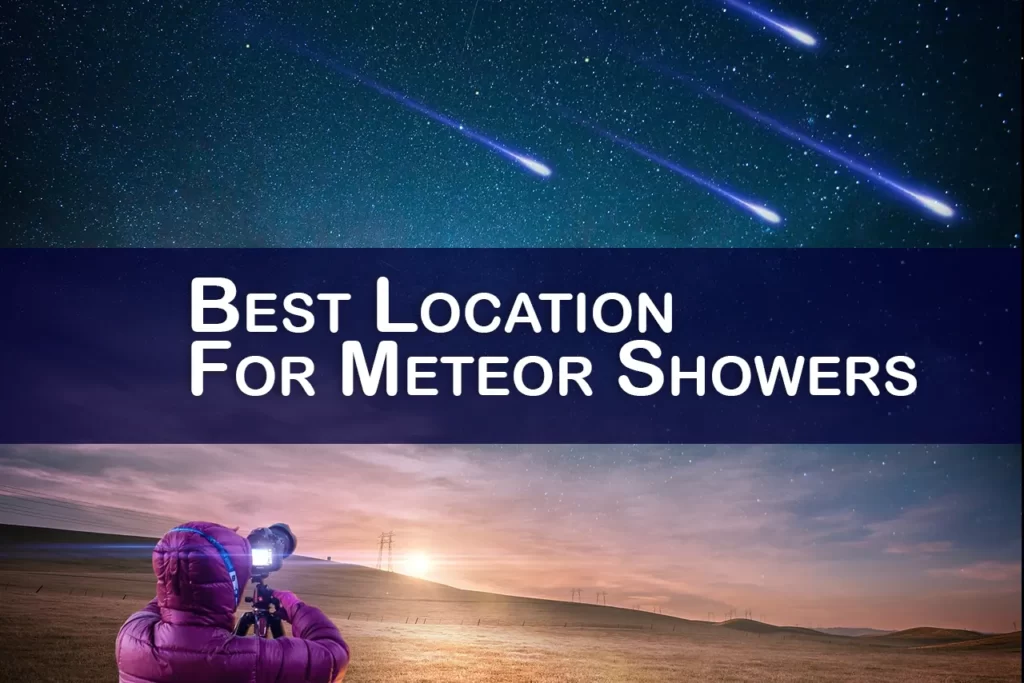Orionid Meteor Shower 2023 : When, Where, and How to Watch
by Singh · Published · Updated

The Orionid meteor shower 2023 : There are many different meteor showers throughout the year, each with its own unique characteristics and visibility.
The Orionids, which occur in October, are one of the most well-known and reliable meteor showers. This is a great opportunity to go outside and see them for yourself, and to learn what makes them so special.
Shooting stars are not actually stars, but are caused by meteoroids. Meteoroids are small rocks that travel through space. They can be as small as pebbles or sand grains, but in rare cases, they can be much larger.
Our Earth orbits the Sun, and as it does, it can sometimes collide with these objects. About 48 tons of meteoroids hit Earth every day.
Table of Contents
ToggleMore About Orionid Meteor Shower 2023
As the Orionid meteoroids enter our atmosphere, they become meteors and burn up at high altitude, causing bright streaks in the sky visible for a short time. The Orionids have an average speed of about 61 km/s (38 miles per second).
The Orionid meteor shower is caused by debris from Halley’s Comet, and it peaks every year in mid-October. The Orionids are known for their bright and fast meteors, and they are one of the most popular meteor showers to watch.
To see the Orionids, find a dark location away from city lights. The best time to watch is in the early morning hours, when the radiant point of the shower (the point in the sky from which the meteors appear to come) is highest above the horizon. You can watch with the naked eye, but binoculars or a telescope will give you a better view.
Where Are They From?
Meteor showers are not caused by chance encounters with meteoroids. Instead, Earth sometimes passes through dense clouds of space debris left behind by comets as they orbit the Sun.
Comets are icy bodies made of loose material held together by frozen gases. When Earth passes through comet debris, meteors can streak through the sky, putting on a dazzling show.
Each meteor shower is associated with a particular comet. The Orionids are notable, not for their abundance of meteors, but for their connection to Halley’s Comet, the first comet recognized as periodic, meaning it orbits the Sun every less than 200 years.
Halley’s Comet orbits the Sun every 75 years. You may have missed it when it was last visible in 1986, but you can still see its trail through the Orionid meteor shower.
When Halley’s Comet gets close to the Sun, its ice vaporizes, leaving behind a trail of debris. As Earth passes through this debris, we experience the Orionid meteor shower.
Meteor showers are easy to enjoy because no special equipment is needed. However, you must be patient and hope for good weather.
Timing For Orionid Meteor Shower

There are at least a dozen meteor showers worth watching throughout the year. They are named after the constellations from which the meteors appear to come.
When you watch a meteor shower, the meteors will all seem to radiate from one point in the sky, called the radiant. The radiant for the Orionid meteor shower is located in the constellation Orion, just to the top left of its shoulder, which is marked by the star Betelgeuse.
The best time of night to watch the Orionids is usually the second half of the night. The Orionids peak annually around mid-October, and this year’s peak is expected to be in the hours after midnight on Sunday, October 22.
During the peak of the Orionids, you can expect to see an average of 40-70 meteors per hour. If you miss the peak, you can still see the Orionids, but you won’t see as many meteors.
Keep Patience
To see the most meteors and the faintest ones, you need to give your eyes time to adjust to the darkness. This takes 20-30 minutes and cannot be rushed.
Don’t just go outside for a quick glimpse. Dress warmly and bring something hot to drink to keep you comfortable.
Be careful not to ruin your night vision by turning on a bright white light. If you need light, use a flashlight with a red filter. You will be surprised how much you can see at night if you give your eyes time to adjust.
The meteor shower rates that are quoted (40-70 meteors per hour for the Orionids) are averages. They also assume that you are in a very dark location and that the radiant point of the meteor shower is directly overhead.
Best Location For Meteor Showers

To see the most meteors, it is important to find a dark location away from city lights. Even if the moon is not shining, you need to avoid bright lights. Find a spot that is not directly illuminated, but where you feel safe. If there is some light pollution, but it is not too severe, you may still be able to see meteors. However, the darker the sky, the better your chances will be. You also need to have a good view of the sky. Don’t just look towards the radiant point of the meteor shower, as meteors can streak across the entire sky. Make sure you can see as much sky as possible. It may also be helpful to bring a reclining chair so you can lie back comfortably and enjoy the show.
Meteor Watching
Meteor watching is a fun and accessible activity for everyone. It doesn’t require any special equipment, and it’s a great way to connect with the universe and slow down from your busy life.
The Orionid meteor shower are a beautiful meteor shower that peaks every year in mid-October. This is a great opportunity to head out into the darkness and explore the sky.






